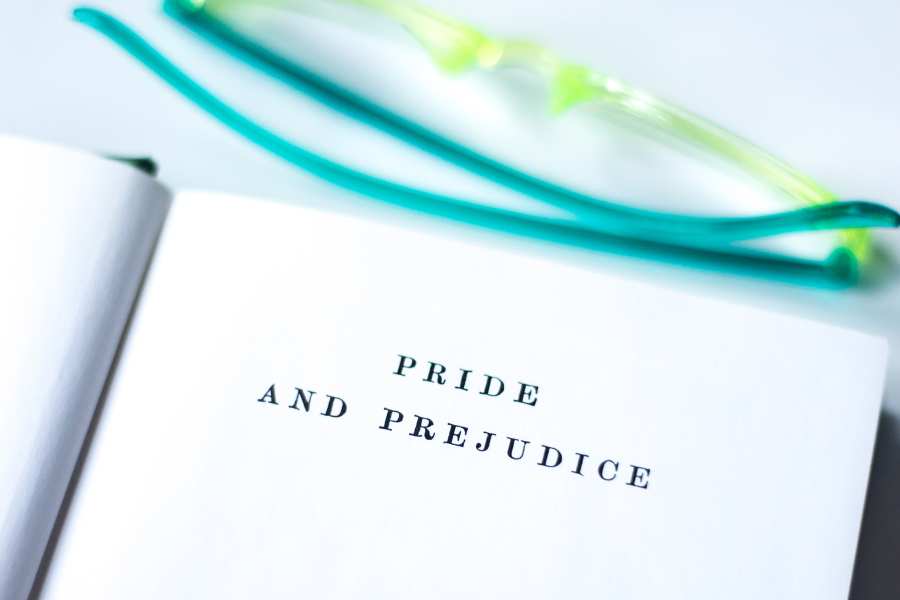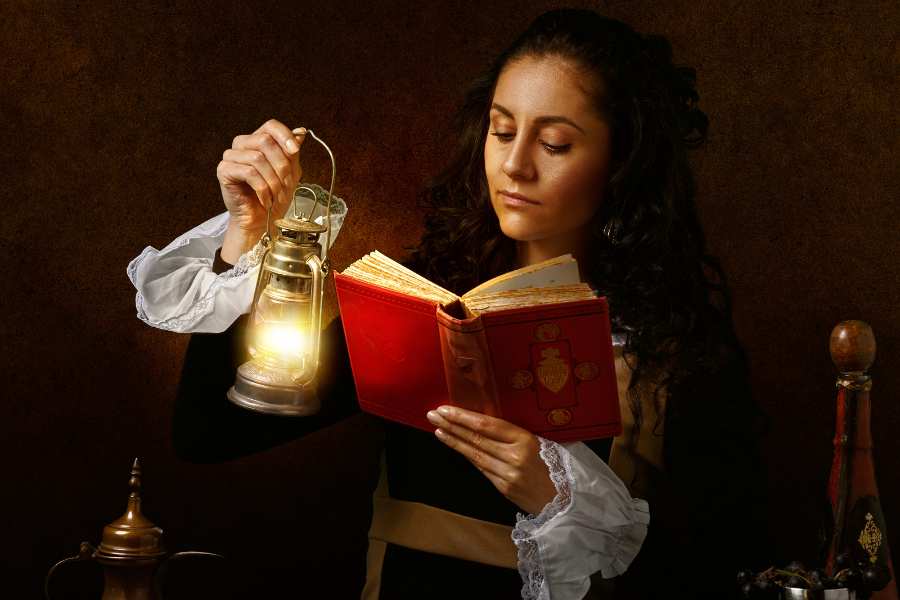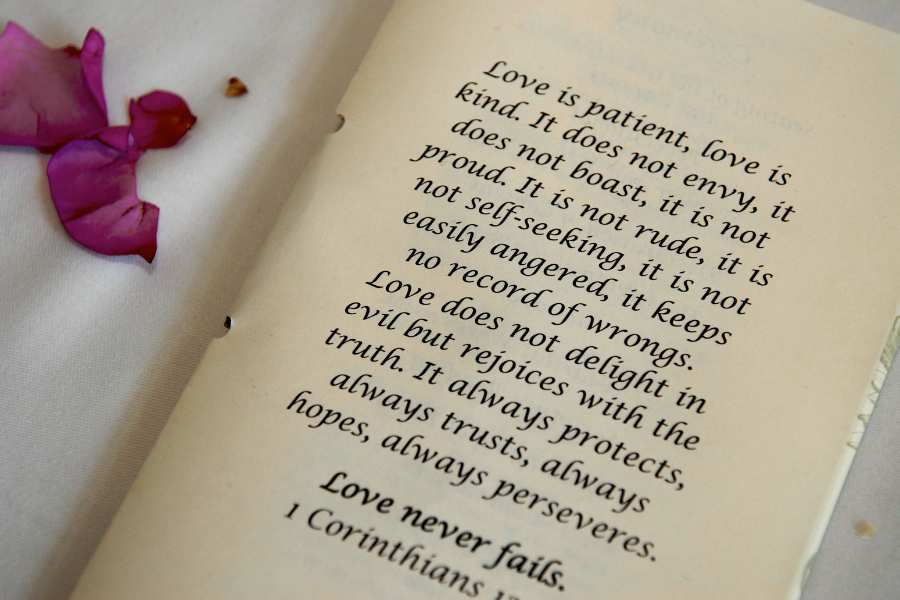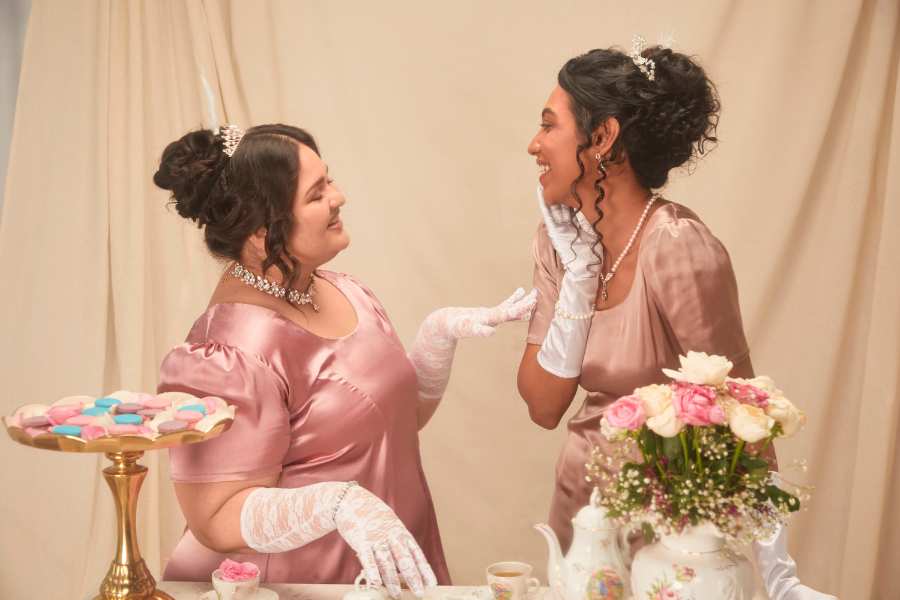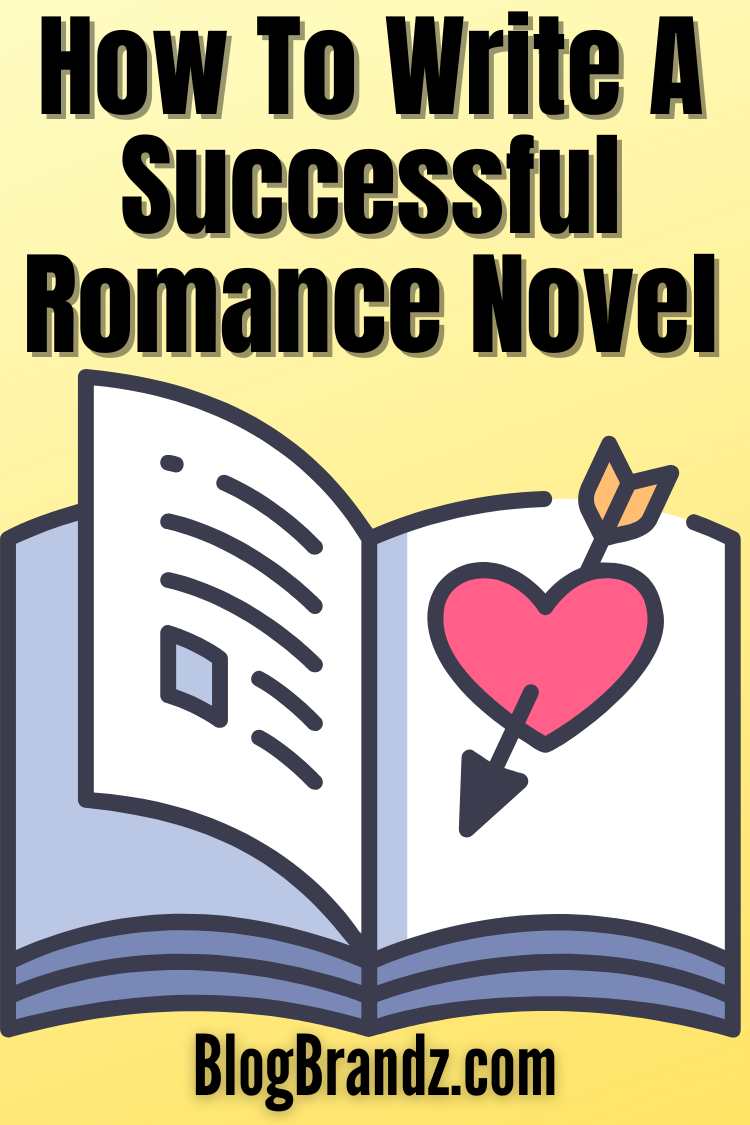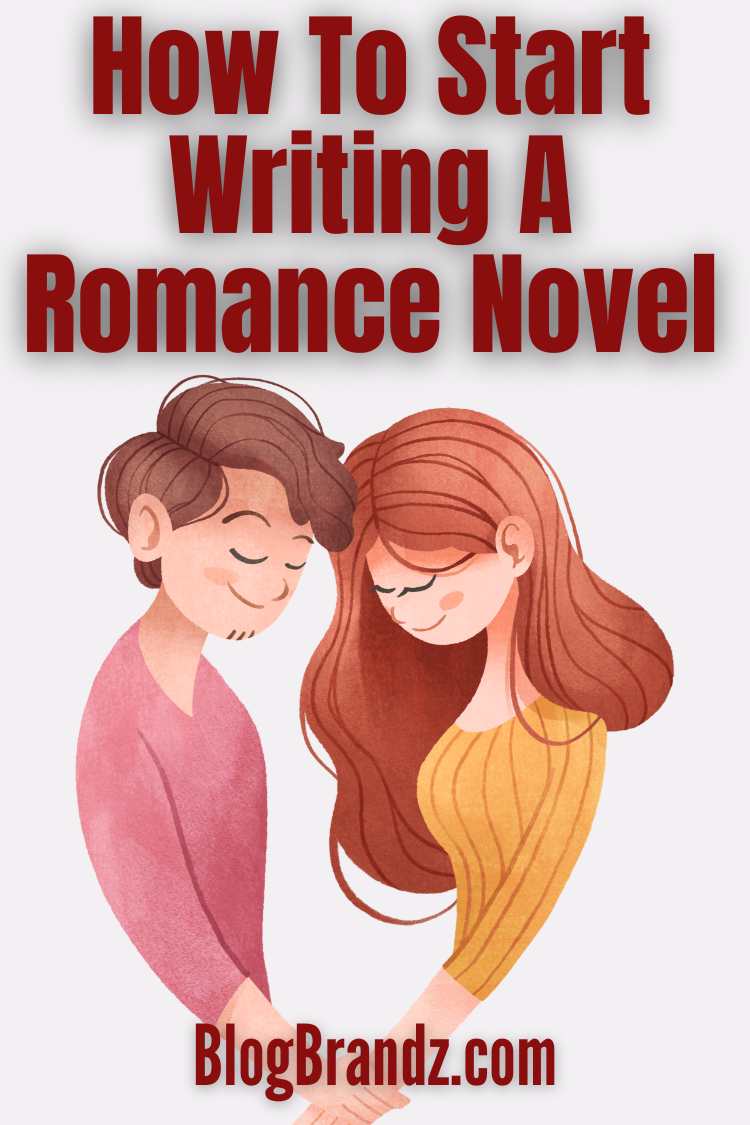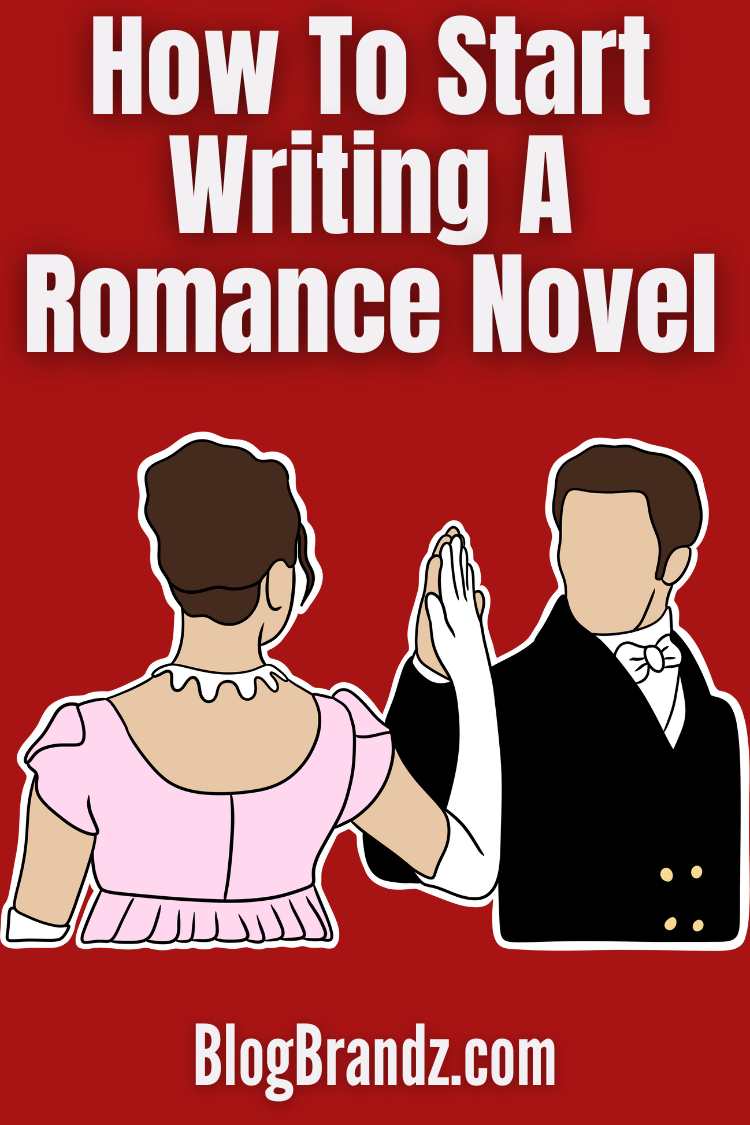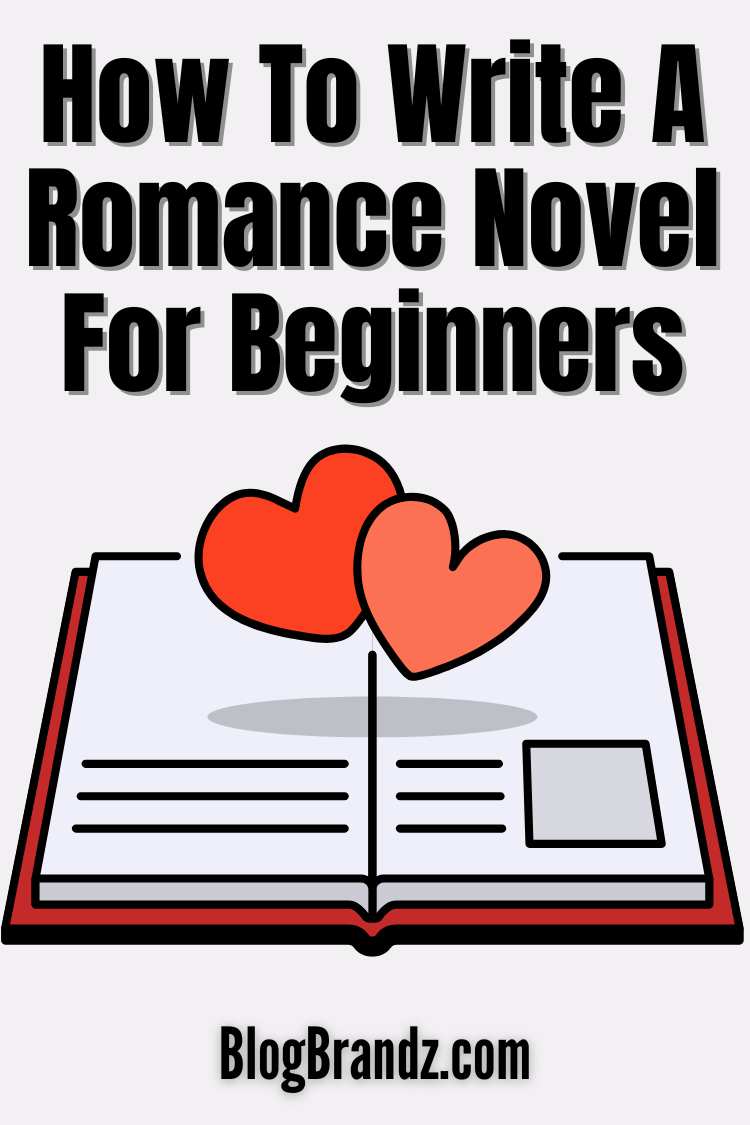Learning how to write a romance novel for beginners will empower you to write stories and earn money online with your spell-binding narratives.
Romance is the most lucrative and popular fiction writing genre, fueling a staggering $1.4 billion romance industry whose audience is largely women. Depending on the publisher, romance novelists can earn anywhere from $1,200 to $26,000 annually.
Becoming a romance novelist is one of the most creative skills to learn to make money online. The success of Julia Quinn’s books (The Bridgerton Series) attests to the potential of the romance genre.
And which young woman can forget the allure of Mills & Boon, known for its vast collection of romance novels, and the prolific romance author, Barbra Cartland?
Through their stories, Mills & Boon and Barbra Cartland played a role in shaping the romantic ideals and literary preferences of countless young readers, fostering a love for the genre and influencing perceptions of love and relationships.
These novels often provided an early introduction to romantic fantasies, offering a world of passion, glamour, and escapism. Crafting romance novels emerges as a particularly inventive skill set for those seeking to monetize their creativity in the digital space.
Discover the potential of writing romance novels and love stories while earning money online with this insightful exploration into writing a romance novel for beginners.
Contents
- How To Write a Romance Novel for Beginners
- #1. Understand the Market
- #2. Understand the Romance Genre
- #3. Develop Compelling Characters
- #4. Build a Strong Setting
- #5. Craft a Captivating Plot
- #6. Establish Chemistry
- #7. Create Conflict
- #8. Pacing is Key
- #9. Include Subplots
- #10. Write with Emotion
- #11. Build Towards a Satisfying Resolution
- #12. Edit and Revise
- The Most Successful Romance Novels
- Romance Novel Writing Courses
How To Write a Romance Novel for Beginners
Writing a romance novel can be an exciting and fulfilling creative endeavor. So how do you write a romance novel or craft an engaging love story? Here’s a step-by-step guide to help you get started:
#1. Understand the Market
Stay informed about current trends in the ever-evolving romance genre by actively researching what captures readers’ attention.
Follow book blogs, industry publications, and social media discussions to identify popular themes, tropes, and styles. Pay attention to successful releases, noting what elements resonate with readers.
Equally important is understanding the preferences of your target audience. Consider the demographic you aim to engage, including age groups, cultural backgrounds, and specific interests.
Whether it’s a preference for certain sub-genres, character archetypes, or narrative tones, incorporating these elements enhances the likelihood of connecting with your audience on a deeper level.
Publisher Rocket’s Tools for Authors provides real-time data on what Amazon book buyers type into Amazon, as well as how many people search for these keywords each month.
By staying attuned to both industry trends and reader preferences, you position your romance novel to be not only artistically fulfilling but also commercially appealing.
Resources:
#2. Understand the Romance Genre
To thrive as a romance novelist and tap into the lucrative online market, start by immersing yourself in diverse romance sub-genres, from contemporary to historical and paranormal.
Understand the intricacies of successful romance by identifying key elements like nuanced character development, building emotional tension, and crafting a resolution that resonates.
The best way to earn money as a romance novelist is to write and self-publish several romance novels each year so you can attract a loyal readership. This works even better if you write a romance novel series featuring the same main character.
Engage with the vibrant community of romance readers and writers to gain insights and refine your skills. Additionally, explore self-publishing platforms, mastering effective book marketing and promotion strategies.
Building a strong author brand is crucial in the digital landscape, empowering you to navigate the online realm successfully and turn your passion into a sustainable source of income.
Resources:
- Free video training: How to find your first 10,000 readers
- Launch your author brand and platform
- How to build influence as a writer influencer
- 10 reasons to build a writer platform with a blog
- How to use Amazon Kindle free eBooks to build an author brand
- How to start building an author platform & sell more books
#3. Develop Compelling Characters
Craft protagonists that breathe life into your romance novel by giving them multifaceted personalities, clear goals, and relatable flaws.
Infuse their backgrounds with depth, shaping characters readers can truly invest in. Foster a strong emotional bond between your main characters and readers by delving into their vulnerabilities, desires, and conflicts.
Let readers feel the heartbeat of your characters, forging connections that transcend the pages. Develop intricate backstories and motivations, ensuring that every triumph and setback resonates authentically.
Through this character-driven approach, your protagonists become more than fictional entities; they become emotional touchpoints, enriching the reader’s journey through the romantic narrative.
In this Writing Mastery Course on Crafting Dynamic Characters, you’ll learn how to access a character’s inner world to enhance your writing, craft character voices, and build a strong reader-character connection.
Discover the art of crafting compelling character arcs that captivate readers and sell novels in this course on Mastering Character Arcs. Learn to choose the right character arc for your story—positive, negative, or flat—and understand the importance of integrating plot and character development.
#4. Build a Strong Setting
Select a setting that harmonizes with the emotional tone of your romance novel, enhancing the overall atmosphere. Whether it’s a quaint coastal town, a bustling urban landscape, or a dreamy countryside, let the setting amplify the emotions and dynamics between characters.
Immerse your readers by vividly describing the environment—paint a picture with words, capturing the colors, sounds, and scents that define the world of your characters. Use sensory details to transport readers into the heart of the setting, creating an immersive experience.
Whether it’s the gentle rustle of leaves or the distant hum of city life, make the setting an integral part of your romance, enveloping readers in a rich, atmospheric backdrop that enhances the romantic journey.
Resources:
#5. Craft a Captivating Plot
Craft a storyline that captivates readers from the outset, weaving a tapestry of emotions and events that keep them invested in the characters’ journey.
If you’re stuck for story ideas and need some way to spark your creativity, you can create a plot outline using an AI story generator tool.
Introduce compelling challenges and conflicts that test the resilience of the romantic relationship, injecting a dose of tension that propels the narrative forward.
Whether it’s external forces, internal struggles, or a combination of both, these obstacles should feel organic and meaningful to the characters’ growth.
Navigate the delicate balance between heartwarming moments and gripping challenges, allowing the characters to evolve and the readers to stay emotionally engaged.
In doing so, you create a narrative rhythm that ensures your romance novel remains a page-turner, leaving readers eager to discover the next chapter in the characters’ evolving story.
Blake Snyder’s Save the Cat! plotting technique is the secret storytelling formula that underlies all popular novels. This code is composed of 15 essential tale “beats” or “plot points” that serve as markers to let readers follow a character’s development and eventual transformation.
In Write a Bestselling Novel in 15 Steps (Writing Mastery), you’ll learn how to harness the power of the 15 core stories from Save the Cat! certified instructor Jessica Brody.
Resources:
- Best book writing software for beginners
- Best AI story generator & AI poem generator tools
- Write a bestselling novel in 15 steps (Writing mastery)
- How to start writing a book for beginners
- Best creative writing MasterClasses by MasterClass authors
- How to learn creative writing skills and be a better writer
#6. Establish Chemistry
Center your narrative on the gradual evolution of the romantic relationship between your main characters. Develop a nuanced and authentic connection by orchestrating moments of chemistry, attraction, and intimacy.
Allow the sparks to fly in both subtle and profound ways, building a magnetic pull that draws readers into the characters’ emotional orbit.
Create scenes that showcase the characters’ vulnerabilities and shared experiences, fostering a deep understanding and connection between them.
Whether through shared glances, meaningful conversations, or tender touches, infuse your narrative with moments that resonate, solidifying the foundation of their relationship.
By prioritizing the development of this romantic bond, you ensure that readers are not just observers but active participants in the unfolding love story.
#7. Create Conflict
Infuse your romance novel with obstacles and conflicts that rigorously test the resilience of the romantic relationship. Introduce challenges that not only create tension but also serve as meaningful catalysts for character growth.
Whether it’s external forces, misunderstandings, or personal insecurities, these conflicts should be intricately woven into the fabric of the narrative, prompting characters to confront their fears and evolve.
Ensure that each obstacle contributes to the overall character arc, propelling the protagonists toward self-discovery and mutual understanding.
By navigating these challenges, the romantic relationship becomes a dynamic force, deepening not only the emotional connection between characters but also their journeys toward personal fulfillment and maturity.
#8. Pacing is Key
Maintain a careful balance in the pacing of your romance novel to keep readers thoroughly engaged.
Alternate between moments of tension, excitement, and emotional intimacy to create a dynamic and compelling narrative. Build anticipation through carefully timed plot twists and challenges that keep the story moving forward.
Intersperse these moments with scenes of emotional intimacy, allowing readers to connect with the characters on a deeper level. Create a rhythmic flow, ensuring that the pacing aligns with the overall tone of your romance novel.
By offering a mix of suspenseful, heart-pounding sequences and tender, emotionally resonant moments, you provide readers with a captivating experience that keeps them invested in the unfolding love story.
#9. Include Subplots
Elevate the richness of your romance novel by incorporating thoughtfully crafted subplots that seamlessly complement the main romantic arc, adding layers of depth to the narrative.
These subplots can introduce additional challenges, mysteries, or personal growth opportunities for the characters, enhancing the overall storytelling experience. Ensure that each subplot contributes meaningfully to character development and resonates with the central theme of the romance.
Whether it’s a character’s journey, a side romance, or an unexpected twist, these additional storylines should interweave with the main plot, creating a tapestry of interconnected narratives.
By integrating well-crafted subplots, you not only captivate readers with a multi-dimensional tale but also provide a more immersive and satisfying reading experience.
#10. Write with Emotion
Immerse your readers in the emotional tapestry of your romance novel by infusing your writing with genuine, heartfelt emotions.
Rather than simply telling readers about the characters’ feelings and experiences, show them through evocative descriptions and nuanced expressions.
Paint vivid emotional landscapes that allow readers to feel the joy, heartache, and passion experienced by the characters. Engage the senses, describing not only what characters say and do but also the subtle cues that convey their innermost emotions.
By employing the “show, don’t tell” technique, you create a more immersive and empathetic reading experience, forging a deep connection between readers and the intricate emotional world of your characters.
#11. Build Towards a Satisfying Resolution
Deliver a resolution in your romance novel that resonates emotionally with readers, providing a satisfying conclusion to the journey of your characters. Tie up loose ends thoughtfully, offering closure on key plot points and character arcs.
Ensure that the resolution feels earned and aligns with the emotional investment readers have made in the story. Address lingering questions or conflicts, allowing the characters to find fulfillment and growth.
Whether it’s a happily-ever-after or a bittersweet conclusion, leaves readers with a sense of completion, allowing them to reflect on the journey with a contented heart. By providing a well-crafted resolution, you leave a lasting impression and fulfill the emotional expectations of your audience.
#12. Edit and Revise
After completing your initial draft, dedicate ample time to the crucial stages of editing and revision. Review your novel with a critical eye, refining the plot, characters, and overall narrative structure.
Polish your prose, ensuring clarity and coherence in every chapter. Consider the pacing and flow, trimming unnecessary elements and enhancing areas that need more depth.
Moreover, invite feedback from beta readers to gain diverse perspectives. These fresh eyes can offer valuable insights into aspects you might have overlooked.
Constructive criticism from beta readers can pinpoint strengths and weaknesses, aiding in the refinement of your novel. Tailor your writing and revisions to align with the expectations and desires of your intended readership.
Remember that the editing process is iterative. Be open to making substantial changes, cutting scenes, or rewriting passages to enhance the overall quality of your romance novel. Each round of revision brings you closer to a polished, reader-ready manuscript.
Resources:
Writing is a creative process, and there’s no one-size-fits-all approach. Allow yourself the freedom to explore and experiment with your ideas, and don’t be afraid to revise and refine your work until you’re satisfied with the final product.
The Most Successful Romance Novels
While individual tastes vary, and success can be measured in various ways, several romance novels have achieved widespread popularity and acclaim.
Analyzing these successful romance novels can help identify some common elements that contribute to their success. Here are a few examples:
#1. Pride and Prejudice by Jane Austen
Pride and Prejudice, a timeless classic published in 1813 by Jane Austen, weaves an enduring tale of love, social intricacies, and personal growth.
Set against the backdrop of 19th-century England, the novel’s strong characterization and astute social commentary continue to captivate readers, ensuring its place as a literary masterpiece transcending temporal boundaries.
Timeless Appeal:
Jane Austen’s masterpiece continues to captivate readers with its relatable themes, transcending historical context to resonate across generations.
Strong Characterization:
Elizabeth Bennet and Mr. Darcy, the iconic protagonists of Pride and Prejudice, boast well-developed personalities. Their growth throughout the narrative adds depth and authenticity, leaving an indelible mark on literary history.
Social Commentary:
Beyond its romantic core, Austen’s novel delves into societal intricacies. The exploration of social class and manners contributes layers of complexity, elevating Pride and Prejudice beyond a mere love story to a nuanced commentary on societal norms.
#2. The Bridgerton Novels by Julia Quinn
The Bridgerton novels by Julia Quinn achieved bestseller status through a combination of compelling factors. Quinn’s adept storytelling, characterized by witty dialogue and well-developed characters, draws readers into the vibrant world of Regency-era romance.
The Bridgerton family’s interconnected tales offer a harmonious blend of romance, humor, and societal intrigue, creating a captivating series that resonates across audiences. They are a Masterclass in how to write a Regency romance novel.
The novel’s success also lies in Quinn’s ability to balance traditional elements of the genre with fresh perspectives, breathing new life into the historical romance landscape.
Additionally, the Netflix adaptation further propelled the series into the mainstream, solidifying its status as a cultural phenomenon.
Compelling Storytelling:
Julia Quinn’s Bridgerton novels excel in storytelling, marked by witty dialogue and rich character development. The narrative draws readers into the enchanting world of Regency-era romance, making it accessible and engaging.
Interconnected Family Dynamics:
The series’ success is attributed to Quinn’s creation of the Bridgerton family saga. Interwoven tales of siblings navigating love, scandal, and societal expectations provide a harmonious blend of emotional depth and familial bonds, captivating readers with relatable dynamics.
Balanced Genre Elements:
Quinn skillfully balances traditional romance elements with fresh perspectives, injecting modern sensibilities into a historical setting. This fusion of classic romance tropes and contemporary storytelling appeals to a broad audience, making the novels stand out in the genre.
Cultural Phenomenon:
The Netflix adaptation catapulted the Bridgerton series into mainstream consciousness, contributing significantly to its bestseller status. The visual medium translated Quinn’s written narratives into a cultural phenomenon, expanding the series’ reach and securing its place in popular culture.
#3. Outlander by Diana Gabaldon
Outlander by Diana Gabaldon seamlessly fuses historical fiction, time travel, and romance into a captivating narrative, inviting readers on an enthralling journey across genres.
With protagonists Claire and Jamie Fraser at its core, their intricately developed characters and complex relationship become the heart of this immersive series, set against a backdrop of adventure and meticulous historical detail that enriches the narrative tapestry.
Genre Fusion:
Outlander is a masterful genre fusion, seamlessly blending historical fiction, time travel, and romance.
This unique combination not only appeals to a broad spectrum of readers but also creates a narrative landscape where the historical context enriches the romantic elements and vice versa, offering a multifaceted reading experience that transcends traditional genre boundaries.
Compelling Protagonists:
At the heart of Outlander are the compelling protagonists, Claire and Jamie Fraser. Gabaldon intricately develops these characters, endowing them with depth, flaws, and virtues.
The central focus on their complex relationship adds layers of emotional richness to the narrative, making readers emotionally invested in the ups and downs of their journey.
Intricate Plot:
The series boasts an intricately woven plot that immerses readers in a complex and detailed narrative. Beyond the central romance, Gabaldon introduces elements of adventure, keeping the storyline dynamic and unpredictable.
Historical details are meticulously integrated, creating a vivid backdrop that enhances the overall depth and authenticity of the narrative.
This intricate plot not only captivates readers with its twists and turns but also provides a rich tapestry against which the characters’ journeys unfold.
#4. Fifty Shades of Grey by E.L. James
In the era of modern romance novels, Fifty Shades of Grey by E.L. James emerges as a cultural phenomenon, blending elements of romance, erotica, and psychological drama.
This controversial yet immensely popular novel explores the intense relationship between Anastasia Steele and Christian Grey, captivating readers with its provocative narrative and sparking widespread discussions on the portrayal of relationships in literature.
Cultural Impact:
The Fifty Shades trilogy, despite evoking diverse opinions, left an indelible mark on popular culture, garnering widespread attention and igniting conversations about the representation of relationships in literature.
Its impact extended beyond the pages, influencing discussions about romance, intimacy, and the boundaries of acceptable content in mainstream fiction.
Engaging Narrative:
E.L. James crafted an engaging narrative within the trilogy, characterized by its rapid pace and emotionally charged storytelling.
The books pull readers into a whirlwind of emotions, blending suspense, passion, and intrigue to keep them eagerly turning the pages, contributing significantly to the trilogy’s immense popularity.
Exploration of Taboo Themes:
One of the distinctive features of the Fifty Shades series is its daring exploration of taboo themes, particularly the inclusion of BDSM elements. This choice added a unique and controversial dimension to the narrative, pushing boundaries and challenging societal norms.
The books prompted readers to confront and discuss unconventional aspects of intimacy and relationships, contributing to the trilogy’s notoriety and cultural impact.
#5. The Notebook by Nicholas Sparks
The Notebook by Nicholas Sparks unfolds as a poignant and enduring love story that has captured the hearts of readers worldwide.
This timeless novel intricately weaves the narrative of Noah and Allie, blending themes of love, destiny, and the enduring power of memories, creating an emotional journey that lingers long after the final page.
Emotional Resonance:
Nicholas Sparks has earned a reputation for crafting narratives that delve into the intricacies of human emotion, creating deeply moving stories that resonate with readers on a profoundly personal level.
In The Notebook, Sparks employs his adept storytelling skills to evoke a spectrum of emotions, forging a connection between the characters’ experiences and the readers’ sentiments.
Relatable Characters:
The strength of Sparks’ novels often lies in the relatability of his characters. In The Notebook, as in many of his works, he portrays ordinary individuals grappling with real-life challenges.
This relatability not only draws readers into the narrative but also allows them to see reflections of their joys and struggles in the characters, fostering a deeper emotional investment.
Bittersweet Endings:
Sparks is renowned for his masterful use of bittersweet endings, and The Notebook is no exception.
The novel concludes with a poignant resolution that adds a layer of emotional impact, leaving readers with a mix of sorrow and fulfillment. This choice enhances the overall resonance of the story, contributing to its enduring presence in the hearts of readers long after the final chapter.
#6. Twilight by Stephenie Meyer
Twilight by Stephenie Meyer redefined the landscape of young adult literature, seamlessly blending romance and the supernatural. It’s a must-read if you want to learn how to write a YA romance novel.
Meyer’s captivating narrative introduces readers to the intense and forbidden love between Bella Swan and Edward Cullen, captivating audiences with its unique take on vampires and werewolves.
Unique Premise:
Stephenie Meyer’s Twilight stands out with its innovative blend of romance and supernatural elements, introducing readers to a captivating world of vampires and werewolves.
The novel’s ability to seamlessly integrate these fantastical elements into a compelling love story captured the imaginations of readers, offering a fresh and imaginative take on the paranormal romance genre.
Intense Relationship:
At the core of the Twilight saga lies the intricate and intense relationship between Bella Swan and Edward Cullen.
Meyer masterfully weaves a narrative filled with palpable tension, exploring the complexities of their love as they navigate the challenges posed by their supernatural identities.
The magnetic pull between the characters adds layers of emotional depth, keeping readers enthralled by the unfolding dynamics of their romance.
Fandom Engagement:
Twilight sparked a cultural phenomenon, creating a massive and dedicated fan following. The engagement of fans, both online and offline, played a pivotal role in the series’ success.
The fervent enthusiasm of readers, expressed through fan fiction, fan art, and community events, not only sustained the popularity of the novels but also contributed to the broader cultural impact of the “Twilight” saga.
Common elements across these successful romance novels include compelling characters, engaging storytelling, relatable themes, and often a unique twist or fusion with other genres.
Emotional resonance, whether through deep and relatable character emotions or unique plot elements, appears to be a key factor in the success of many best-selling romance novels.
Additionally, addressing or challenging societal norms and expectations can contribute to the cultural impact and popularity of a romance novel.
Romance Novel Writing Courses
Unearth a wealth of creative writing insights to empower your journey in self-publishing and promoting romance novels. Dive into these distinctive romance writing courses, tailored to kickstart your storytelling process with valuable guidance and practical tips.
#1. How to Become a Romance Writer
Learn what makes romance fiction the most popular genre in the world with the help of an award-winning romance author. Explore your attraction to romance fiction and learn to personalize a specific subgenre.
Appreciate the craft of romance storytelling, recognizing the genre’s vast creative possibilities. Develop a tailored writing process that aligns with your ideals.
Utilize story structure to craft emotionally resonant experiences for your readers, enhancing the impact of your romance narratives.
Click here to preview this romance writing course
#2. How to Write a Romance Novel
Embark on a comprehensive exploration of romance writing with this Udemy course, dedicated to unraveling the intricacies of the genre and equipping you with the essential tools to craft an outstanding tale.
While specifically tailored for romance, numerous lectures extend their applicability to all fiction genres, ensuring valuable insights that transcend boundaries, making it a beneficial resource even for those whose primary focus may not be within the romance genre.
Click here to preview this romance writing course
#3. How to Outline Your Romance Novel Fast
Gain mastery in crafting your beloved genre of romance fiction with the specialized guidance offered by the “How to Outline Your Romance Fiction” course.
Tailored for those with a clear passion for romantic narratives, this course imparts advanced story craft techniques, unraveling the intricacies of character arc and emotional conflict to breathe life into your characters.
Even if you’re unfamiliar with story structure, this romance novel writing course empowers you to construct a simple yet powerful emotional story map, expediting the process of outlining your romance fiction with efficiency and expertise.
Click here to preview this romance writing course
#4. Structural Editing for Romance Novelists
Elevate your romance novel to its full potential with the “Structural Editing for Romance Novelists” course, a crucial step post-writing. Delve into in-depth story structure techniques, mastering the art of constructing a page-turning romance novel.
Uncover the secrets of the Eight Key story beats, laying the solid foundation for your narrative, and gain insights into the detailed story structure breakdown of successfully published romance novels.
Armed with transformational character arcs, you’ll learn to sidestep clichés and implement a potent 8-step structural editing process applicable to any romance fiction project, ensuring your novel achieves its storytelling prowess.
Click here to preview this romance writing course
#5. How to Write a Romantic Comedy
In the course on How to Write a Romantic Comedy, you’ll learn how to combine story craft and character arcs to write a compelling romantic comedy novel or screenplay. Explore the surging popularity of Romantic Comedy across movies, streaming, TV, and fiction.
Uncover distinctions between romantic comedy and drama while sidestepping clichés through transformational character arcs. Dive into the significance of character arcs for crafting engaging romances.
Master in-depth story structure with 8 key beats, illustrated by successful examples and analyzed breakdowns of Notting Hill and Failure to Launch. Learn to develop your Romantic Comedy around a central theme or dramatic question.
Click here to preview this romance writing course
#6. Shonda Rhimes Teaches Writing For Television
Shonda Rhimes, the creative force behind Grey’s Anatomy, faced nerve-wracking moments when pitching the show, needing to restart twice due to nerves. Now, she’s a powerhouse in television, responsible for hits like the critically acclaimed Bridgerton series.
In her comprehensive screenwriting MasterClass, Shonda Rhimes shares her expertise in crafting successful TV shows. Her screenwriting class delves into creating compelling characters, writing engaging pilots, pitching ideas effectively, and excelling in the writers’ room.
Additionally, she provides access to original pilot scripts, pitch notes, and series bibles from her shows. Step into the world of Shondaland and learn from a master storyteller.
Click here to preview Shonda Rhimes MasterClass
© 2024, Priya Florence Shah. All rights reserved.
Priya Florence Shah is a bestselling author and an award-winning blogger. Check out Devi2Diva, her book on emotional self-care for women. In her spare time, Priya writes science-fiction novels and poetry and chills with her two-legged and four-legged kids.
Discover more from Business & Branding Tips
Subscribe to get the latest posts sent to your email.



